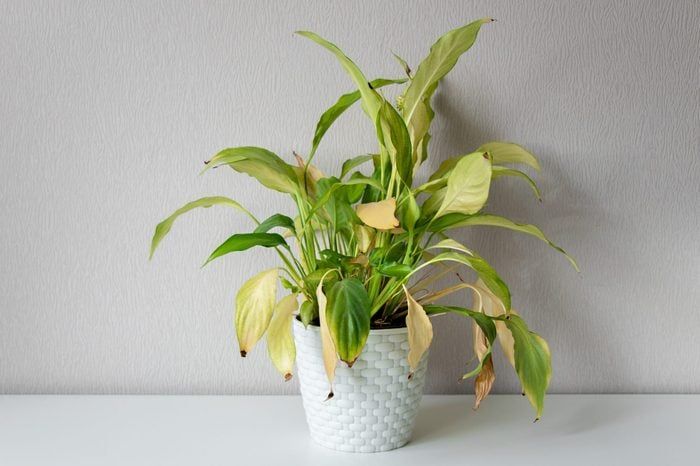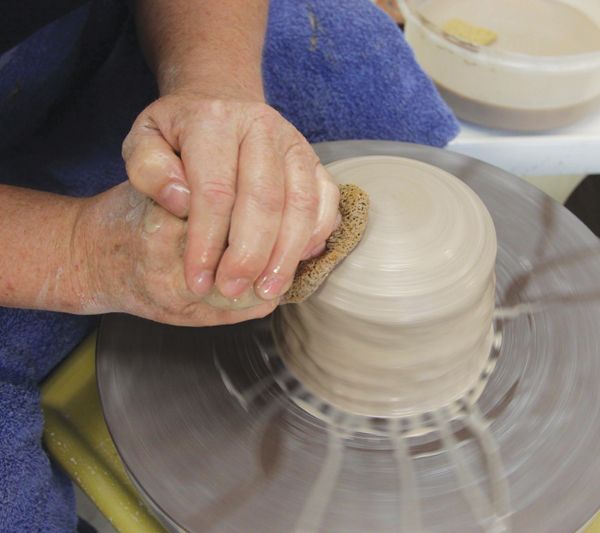Why Should You Avoid Using Terracotta Pots For Container Gardens?
Terracotta Pots Dry Out Too Quickly
Terracotta pots are made from natural clay that is fired at high temperatures. This process makes the clay porous, allowing air and moisture to pass through the pot walls. According to The Do’s and Don’ts of Terracotta Plant Pots, the porous nature of terracotta means moisture is released from the pot faster than other non-porous materials like plastic or glazed ceramics.
The porosity causes rapid evaporation as water migrates through the pot walls. Terracotta acts like a wick, pulling moisture from the soil and evaporating it into the air. This can lead to the soil drying out very quickly, sometimes within a day or two of watering. Plants in terracotta require more frequent irrigation than pots made of less porous materials.
Moisture Fluctuations Stress Plants
Terracotta is porous and allows water to evaporate through the sides and bottom of the pot. This can cause the soil to dry out very quickly, sometimes within a day or two after watering [1]. The frequent fluctuations between very wet soil immediately after watering and extremely dry soil before the next watering can stress plants.
When moisture levels drop, plants respond by closing their stomata (pores) to try to limit water loss [2]. However, closing the stomata also limits their ability to take in carbon dioxide for photosynthesis. This can slow or stop growth. Plants may start to wilt or have curling leaves as the cells lose turgidity.
If the rapid drying happens too frequently, it can disrupt nutrient uptake and cause deficiencies over time. Plants expend extra energy trying to grow more roots to increase water uptake, leaving less energy for foliage and flower production.
More Frequent Watering Required
One of the main downsides of using terracotta pots is that they require more frequent watering than other materials like plastic or glazed ceramic. This is because terracotta is porous and allows water to evaporate through the sides and bottom of the pot much more quickly than other non-porous materials (Source).
To keep the soil moist enough for healthy plant growth in a terracotta pot, you’ll likely need to water at least every 2-3 days in warm weather. Some plants with high water needs may even need daily watering. This is quite frequent compared to plastic and glazed pots which only need watering every 5-7 days (Source).
The frequent watering required by terracotta pots can become inconvenient and labor intensive, especially if you have a large collection of plants. You’ll need to check the moisture level of the soil regularly and make watering a daily chore rather than a weekly one.
Nutrient Deficiencies
The porous nature of terracotta requires more frequent watering, which can flush nutrients out of the soil before plants have a chance to absorb them properly. As water evaporates through the sides of terracotta pots, it pulls dissolved salts and minerals with it. This leaves behind soil that is deficient in key nutrients like nitrogen, phosphorus, and potassium that plants need to thrive.
According to an article on Succulent Care, “In extreme cases, high salt levels can affect the availability of certain nutrients in the soil. This could potentially lead to nutrient deficiencies.”
Source: https://www.succulent.care/efflorescence-on-terracotta-pots/
Without proper nutrients, plants in terracotta pots may experience stunted growth, discolored or spotty leaves, weak stems, and lower flower/fruit production. To counteract this, you would need to fertilize more often when using terracotta pots.
Not Ideal for Hot Climates
Terracotta pots tend to retain heat and can easily overheat plant roots, especially in hot climates. The porous nature of terracotta allows air flow but also absorbs heat from the surrounding environment. This can lead to excessively dry soil and cause stress for plants (source).

In areas with high temperatures, the temperature inside a terracotta pot can be significantly higher than the air temperature. This excessive heat around the roots can damage plants over time. Certain plants like ferns, orchids, and other tropicals prefer consistently cooler root zones and may decline if planted in terracotta pots in hot climates.
To help mitigate overheating, gardeners in hot areas may need to double pot their plants, moving terracotta pots inside decorative cache pots or using insulation like burlap. However, plastic, glazed, or other non-porous containers are better choices for consistently hot areas (source). Their thicker material helps block heat absorption and moderates soil temperature.
Prone to Cracking
Terracotta is prone to cracking and breaking over time due to its porous nature. As the pot absorbs water and then dries out, it goes through expansion and contraction cycles. This constant fluctuation causes stress on the clay material, leading to cracks and chips [1]. Cracks tend to form near the rim, corners, or bottom of the pot. They can start small but expand over many wet/dry cycles. Freezing temperatures in winter can also cause water trapped inside the pot to expand and crack the terracotta. To help prevent cracking, avoid extreme temperature swings, bring pots indoors before freezing weather, and seal the interior and exterior with a waterproofing product [2].
Heavy When Filled
Terracotta is a porous earthenware that is dense and extremely heavy when filled with soil and water. According to Monrovia, a 1 gallon terracotta pot weighs around 5 lbs while empty but increases to 10.5 lbs when filled with soil [1]. The weight continues increasing dramatically with larger sized pots. A 14″ wide x 14″ tall terracotta planter can weigh over 100 lbs when filled!
The heavy weight makes terracotta pots difficult to move once planted. The weight also puts pressure on pot rims, causing them to crack over time. For large plants like trees, the sheer weight of a filled terracotta container makes it impractical. Lighter plastic, resin, or fiberglass planters are better suited for large or permanent plantings.
Visible Mineral Deposits
One downside of using terracotta pots is that they can develop unsightly white mineral deposits over time. This happens when minerals from tap water are left behind after the water evaporates. Hard water containing high amounts of calcium and magnesium is especially prone to leaving mineral residues on terracotta pots
As water repeatedly evaporates through the porous terracotta, it leaves behind white mineral salts on the exterior surface of the pot. These water deposits can create a crusty buildup that ruins the nice terra cotta appearance of the pot.
There are a few ways to remove the mineral deposits, such as using vinegar, lemon juice, or commercial cleaners designed for terracotta pots. However the deposits will likely return over time with continued use, so it can become an endless cleaning chore. To avoid mineral buildup altogether, water plants with distilled or rain water instead of tap water.
Challenging for Large Plants
One downside of terracotta pots is that they may be too small for larger plants with expansive root systems. Many annuals, perennials, shrubs, and trees need quite a bit of space for their roots to spread out and grow.
However, traditional terracotta pots and planters come in relatively small sizes. Though you can certainly find some larger terracotta containers, in general plastic and ceramic pots come in a wider diversity of sizes. This makes it easier to find an appropriately sized container for large plants if opting for plastic or ceramic instead.
If a plant’s roots are very confined and don’t have room to spread out, it can stunt the plant’s growth. The plant may become root-bound or even die. This is because when roots don’t have space, they can’t properly take up water and nutrients.
For this reason, terracotta pots work best for small to medium sized plants. Large shrubs, trees, and spreading perennials will likely outgrow terracotta pots quickly. It’s best to choose a more sizable planter made from another material for these big growers.
Better Alternatives Exist
While terracotta pots have some drawbacks, there are many great alternative materials that are better suited for container gardening.
Plastic and resin pots are affordable, lightweight, and come in a huge variety of sizes and colors. They retain moisture well and won’t crack or chip easily. Plastic is one of the most popular and widely available pot materials. Look for thicker plastic pots made from polypropylene or polyethylene for durability and UV resistance https://jayscotts.com/blog/planter-materials/.
Glazed ceramic pots are attractive, provide good aeration and drainage, and are less prone to drying out than unglazed terracotta. The glazed surface prevents mineral deposits from forming. Glazed ceramic comes in many styles and can mimic the look of terracotta while avoiding some of its drawbacks. Ceramic pots work well for succulents and cacti.
Wood Planters like redwood, cedar, and teak are naturally rot-resistant and environmentally friendly. Look for sustainably sourced woods. Wood provides excellent insulation to protect roots from temperature swings. However, wood is prone to decay over time when exposed to moisture and may require more frequent maintenance.
Other materials like galvanized metal, concrete, and fiberglass also make excellent alternatives for container gardening. Consider factors like weight, durability, appearance, and moisture retention when selecting the right pot material for your plants and climate.

